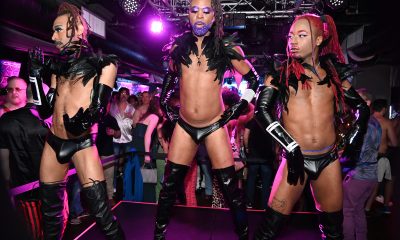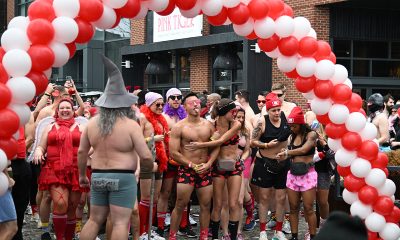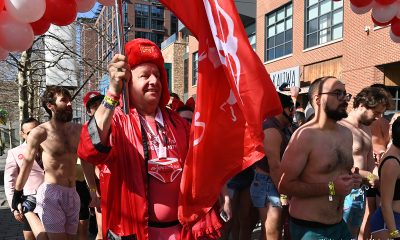a&e features
New album features everything we love about BETTY
An interview with Alyson Palmer, Amy Ziff, and Elizabeth Ziff

A new album by a band you love, especially one that takes its time between releases is cause for celebration. For me, that celebration takes on special meaning when it comes to BETTY, an all-female trio I have been following since the mid-1980s, during the band’s early years. Since that time, BETTY has amassed a sizeable following via its connection to “The L Word,” performing on the HBO/CTW series “Encyclopedia,” appearing in an original off-Broadway musical, and playing Pride and women’s music festival events. The newly released “EAT” (hellobetty.com) has everything we’ve come to know and love about BETTY: fabulous harmonies, a splendid cover tune, and songs with messages of empowerment, as well as humor. Alyson Palmer, and sisters Amy Ziff and Elizabeth Ziff generously made time for an interview to discuss the new album and their career. The D.C. natives perform their annual BETTY Holiday Show on Dec. 17 at Union Stage.
Blade: For those few who may not be in the know, please say something about how BETTY, the name of the band, came to be.
Alyson Palmer: We just needed a name fast for a party for Dodie Bowers, a dancer and music mogul who ran the legendary 9:30 Club on F Street in D.C. She invited us to sing without our full band at the time, On Beyond Zebra. There was a Nair ad on TV at the time where long-legged ladies walked past a besotted guy who said, “Helloooo, Betty!” and that’s what stuck with me. Surfer slang with a timeless appeal and just a smidge of street harassment.
Elizabeth Ziff: We said we would love to and thought she wanted the whole band, but she just wanted the three of us. We had no idea we would be BETTY for almost 40 more years.
Amy Ziff: BETTY is the all-American, smart, sassy, can-do gal with a twist. That’s us!
Blade: In BETTY’s early days, the band began selling t-shirts that read BETTY Rules (which are still available at hellobetty.com). How did that slogan come about?
AZ: It didn’t come from us! I think it’s a catch phrase that fans and friends started.
EZ: I remember that people would shout it to us on the street in DC. It just stuck. It was better than BETTY rocks….and it’s stood the test of time. Some people have theirs from back in the day, but lots of new, young fans are buying them now and wearing them proudly. It’s definitely a cult [laughs].
Blade: In addition to BETTY, the DC music scene has produced some legendary musical acts including Roberta Flack, Mary Timony, Fugazi, Trouble Funk, Shudder to Think, Minor Threat, E.U., Tommy Keene, Crystal Waters, and Mary Chapin Carpenter. What does it mean to you that BETTY is part of that legacy?
AZ: It means a lot. I love being part of that incredible music community.
EZ: It means everything. We played with a lot of those people. Roberta Flack, Trouble Funk, MCC, and the list goes on. It was such a great scene in DC In the 80’s. The underground go-go scene and the harDCore scene and the new wave scene. We all supported each other. As a matter of fact, Jason Carmer, who was in a lot of DC bands including 9353, is the producer on our new album “EAT.” DC was and always will be seminal to BETTY and our life.
AP: BETTY wouldn’t exist if it were for the bubbling gumbo of music, art, spoken word and politics that defined DC in the 80’s. All of us were raging against Reagan and the diabolical, hateful conservatives who swept into town. Regardless of our mode of expression, we all poured our passion for a better world into our art. Because the scene was relatively small, we supported each other and ran from party to venue to see what and how other artists were busting out. Essex Hemphill and Wayson Jones were at packed house parties with Brenda Files and other poets like you Gregg, everyone snapping fingers at the smooth truths flowing. Trouble Funk played out on the street where we all danced wildly on swampy summer nights while Bad Brains showed us how to slam dance in steamy venues. Chapin sang at Kramer Books and pop idol Tommy Keene was everywhere. The nexus of all new music was the 9:30 Club where a wild blonde wailed an entire set from the top of a grand piano jammed onto the tiny stage with her band, soon to sing solo as Cyndi Lauper. Natalie Merchant hid behind drums, REM jangled, Iggy Pop bled, The Bus Boys preened, Red Hot Chili Peppers came out for their encore stark naked with just sweat socks covering their johnsons and Henry Rollins mesmerized the packed room of sweating punk boys by grinding slowly for long delicious minutes as he sang and grew the biggest bone I’ve ever seen on stage, literally having sex with the crowd and popping minds open left and right. Fine artists flourished, including Mapplethorpe causing scandal at the Corcoran with his show. It was an amazing time to be a feminist art rock trio with a lot to say!
Blade: BETTY has also made a name for itself via the activism of its members, including the founding of the 501(c)3 not-for-profit organization The BETTY Effect. Is being an activist something that was ingrained in you by your family or was it something you came to on your own?
AP: Great question, Gregg! I think each of us had formative experiences that made us warriors. My dad grew up with severe corporal punishment and tried to lessen the degree with my brother and me but used it liberally. I found it abusive, unfair and unacceptable even at a young age – not so much for myself, but when this raging giant of a man would lash my gentle, artistic brother I couldn’t take it. When I was about 10, I threw myself between the two of them and yelled from my soul that never again would I allow him to take out his anger on a small defenseless being, never. He never did again. I became a protector. Some would say bossy, but I can’t tolerate unfairness and cruelty to weaker beings.
EZ: It was ingrained in me as a kid. We were Air Force brats living overseas and we grew up Jewish in some very anti-Semitic places. Paris, Virginia, etc. So, I learned at a very young age that life wasn’t fair, and people could be mean for no reason. I grew up knowing that girls were getting the raw end of the deal, and I wanted things to be fair…it’s never stopped. The more you know, the more you become aware of the wrongs in the world, the more you want it to be right.
AZ: BETTY was born in DC. We knew early on that it was our responsibility and privilege to speak (and sing) out as artists about things that needed to change, and causes we believe in.
Blade: Please tell the readers something about the mission of The BETTY Effect.
AP: The BETTY Effect is an organization that uses music and performance techniques to help strengthen, embolden and empower women, girls and LGBTQ+ folks. BETTY has found that anything can be achieved if done in harmony with community, no matter how long it may take. That’s why we travel around the world holding workshops and concerts to connect people in need of bolstering with the beauty of their inner rockstar, with their possees, and with local organizations that can serve their immediate needs and continue to help grow confidence. At the end of the day, that’s all it takes – believing in your mission and believing you are the right messenger. It’s so simple but can seem impossibly hard, until you have your crew wo believes in you. The BETTY Effect builds crews from inside out.
Blade: In late August, BETTY performed at the Women’s Equality Day event at Kennedy Center. What is that like for each of you playing for the hometown crowd?
AZ: Wonderful!
AP: I love DC. So many memories! Parties, playing and protests, like our first Pride Day hidden-away behind the trees on 21st Street to protect the still-closeted, Take Back the Night Rallies, and glorious Adams Morgan Day. At Kennedy Center we received our first award, “Entertainer of the Year,” so it’s a delight to be back at such a gorgeous place for celebrating all the arts, the best DC has to offer.
EZ: It’s been a long time since we’ve lived in DC. I love it there but consider myself a full-on New Yorker at this point. I still love going back to DC. It’s so cool there and political and fun. And it’s beautiful and the Kennedy Center is very posh, so I’ll have to wear clothes [laughs].
Blade: “EAT” is BETTY’s first new full-length album in a number of years. Were all the songs written over the course of the period or were they written in one burst for the purpose of the album?
AZ: Great question! Some were written recently, and a couple were actually rewritten and changed while recording.
AP: Every seven years we get the itch and pop out another album. Some of the songs have been incubating for quite a while but two burst out from skeletal beginnings in the studio with our fabulous producer, Jason Carmer and Human Fader, who are wildly creative and fun artists to create with in sexy Mexico City.
EZ: Some songs have been churning around and changing and forming for a few years, some were written during the pandemic, and some came together for this album. All of them are new in the way that they have changed and grown.
Blade: “EAT” opens with the song “Together,” which was originally recorded in a rock/funk version on 1999’s “Betty 3,” and is now heard in a dance music version. Please say a few words about why you chose to re-record that song.
AP: I am 1000% about community. The older I get the more I see that having a tribe, village, family, your bevy is everything. To accomplish the biggest goal, the actual changing of society, the only way is by connecting a web of like-minded souls to rise against an unfair status quo and create change. Ever since that nauseating November day when we woke to understand that America had elected a hateful, ignorant boor for President instead of a brilliantly over-qualified woman, it has been my daily mission to correct that wrong. As Gloria Steinem says, outrageous rebellions start with everyday acts. Creating unity with joy is a radical act, especially with music, together. It can’t be said enough.
AZ: Now, more than ever, we need unity. Otherwise, the world will not survive.
Blade: The anthemic “Pride,” the first single from “EAT,” was released in advance of Pride 2024. What does BETTY’s embrace by the LGBTQ+ community mean to you, as either a member or an ally?
EZ: Being a big lez, and also a gay man in lesbian clothing, I’m all about it. I pretty much assume everyone is gay until I find out shockingly that they’re not.
AP: It. Is. Everything. The two times I felt myself break bounds I realized that society had wrapped around me were the first time I saw LaBelle on TV as a child, where, terrified, I saw for the first conscious time that women could be fantastical and scary and explode with power without caring what men or anyone thought, and my first Pride Parade in DC. Seeing the riot of wit and color unleashed by people who had just as much right as anyone to love and be loved, but had to fight to exist, I had the epiphany that I stood surrounded by joyful warriors. They risked it all, proud on the streets, snapping their fingers under the nose of anyone who tried to deny them. I saw they were the evolved ones, the ones who lived like artists at least in that moment, freely, and I fell in love spiritually, not physically, with this tribe I understood.
Blade: “Pride,” as well as “Flow,” “Soundproof,” “Gangway,” and “Big Size Love,” have irresistible dance energy. Have you ever been at a club and heard a DJ spin a BETTY song? If so, how did it feel?
EZ: I’m a DJ (DJ ezgirl), so I’ve spun them, and it feels great to watch people dance to our music. Recently, we had the pleasure of hearing our song “Pride” and the remix by Bill Coleman and Peace Biscuit spun by the amazing and infamous DJ Lina Bradford in front of thousands of new folks and they dug it. So, that’s amazing. Let’s hope DJ’s all over the world spin our stuff.
AP: It’s a rollercoaster! At first you think. “I know this song. Who IS this?” Then you realize. Then you’re slightly embarrassed. Then you fling yourself into the experience with joyful abandon, loving it even more as it’s released into the wild!
AZ: Seeing people groove, dance, and respond to our music is what it’s all about!
Blade: BETTY is no stranger to cover tunes. Over the years BETTY has covered The Association (“Windy”), The Beatles (“Lucy In The Sky With Diamonds”), and Sammy Cahn and Jimmy Van Heusen (“High Hopes”), to name a few. “EAT” contains BETTY’s rendition of Burt Bacharach and Hal David’s “What the World Needs Now Is Love.” Please tell the readers why that song was chosen.
AP: That was Elizabeth’s idea. We‘re all mad for slinky cool vocals like Dionne Warwick and Shirley Bassey, so when she suggested it, we all dove right in!
EZ: We fought so much when we were arranging this song acapella. It’s so hard to sing and was intense to work out, but all three of us love this song and we chose to put it on this album because it’s acapella and important to us to do that. Also, in this time of division and strife, it’s important to us to remember that love is what we all need.
AZ: The world is upside down now. Especially since Oct. 7. I’ve never seen so much hatred and misinformation spewed in my lifetime. I’ve also never felt more unsafe being part of the Jewish community, for myself and my family. If love can’t find a way to survive and thrive, I worry for us all.
Blade: BETTY has some tour dates this fall. What are you most looking forward to about those shows?
AZ: Playing our new songs, seeing old friends, and connecting with new people. And wearing groovy new clothes and getting lots of prezzies from fans [laughs].
EZ: Playing our new music and meeting new fans. And, of course, continuing our wonderful career that never ends.
AP: I love playing live! Like I said, flinging yourself with wild abandon into a song you adore as it’s amplified into the wild is a thrill everyone should have a chance to feel. Like a chef serving a great meal to a crowd or an athlete moving with the stands cheering her on, experiencing the flow of your creative energy connecting with the electric desire of others is a feeling that ignites your whole being like a lighthouse. People flowing along with us by singing along to our songs feels absolutely incandescent.
Blade: Are there more tour dates in the works?
AP: Always. That’s the profound beauty of what we do. No matter how terrible (and there have been nightmares) or how glorious a show is, there’s always another one. Another adventure is waiting just ahead, with friends old and new to share it. We’re taking EAT to beloved Provincetown October 17-20 for Women’s Week at the Post Office and 2025 has some great escapades brewing. The BETTY Rulers on our email list (hellobetty.com) are always the first to know!
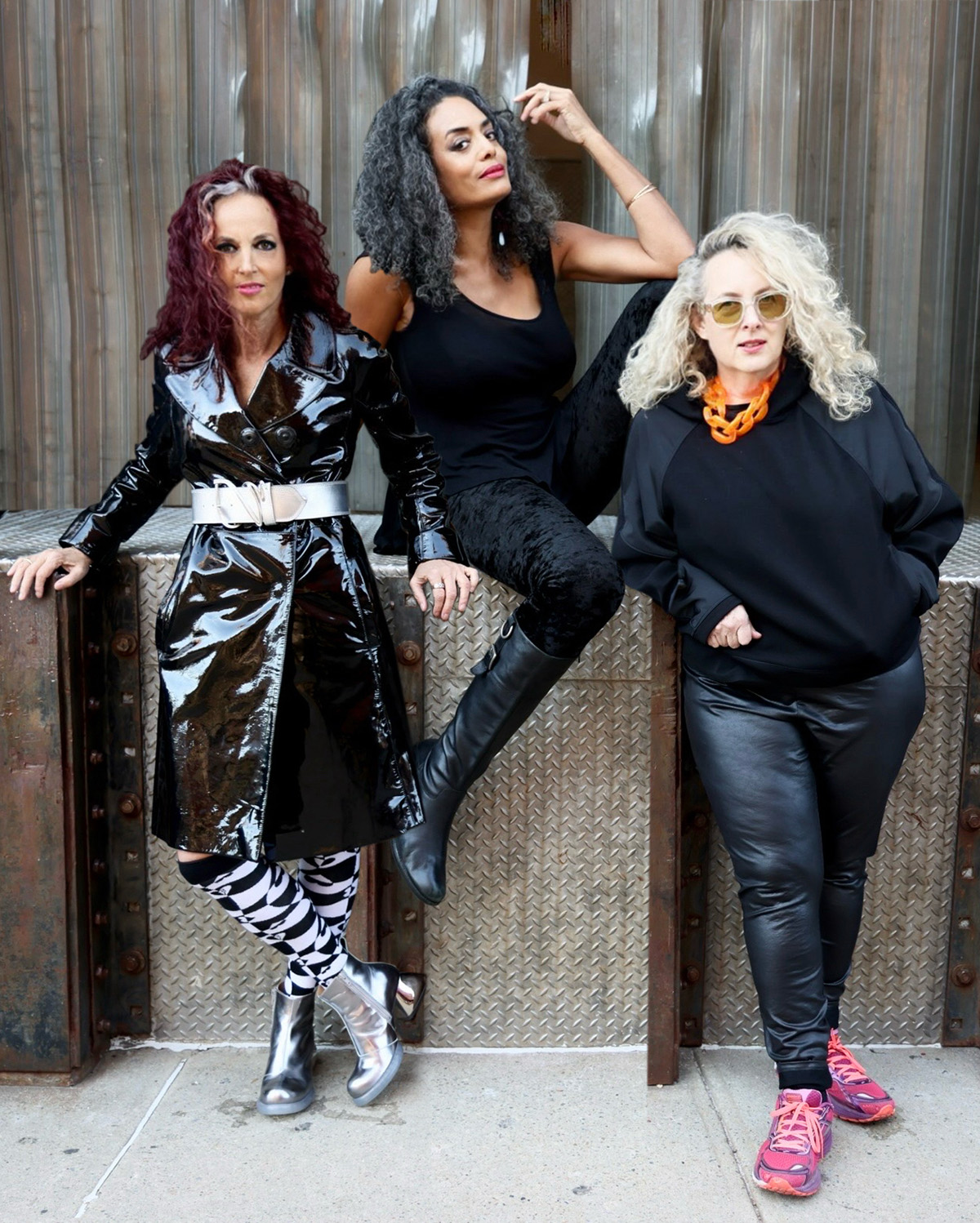
a&e features
Visit Cambridge, a ‘beautiful secret’ on Maryland’s Eastern Shore
New organization promotes town’s welcoming vibe, LGBTQ inclusion
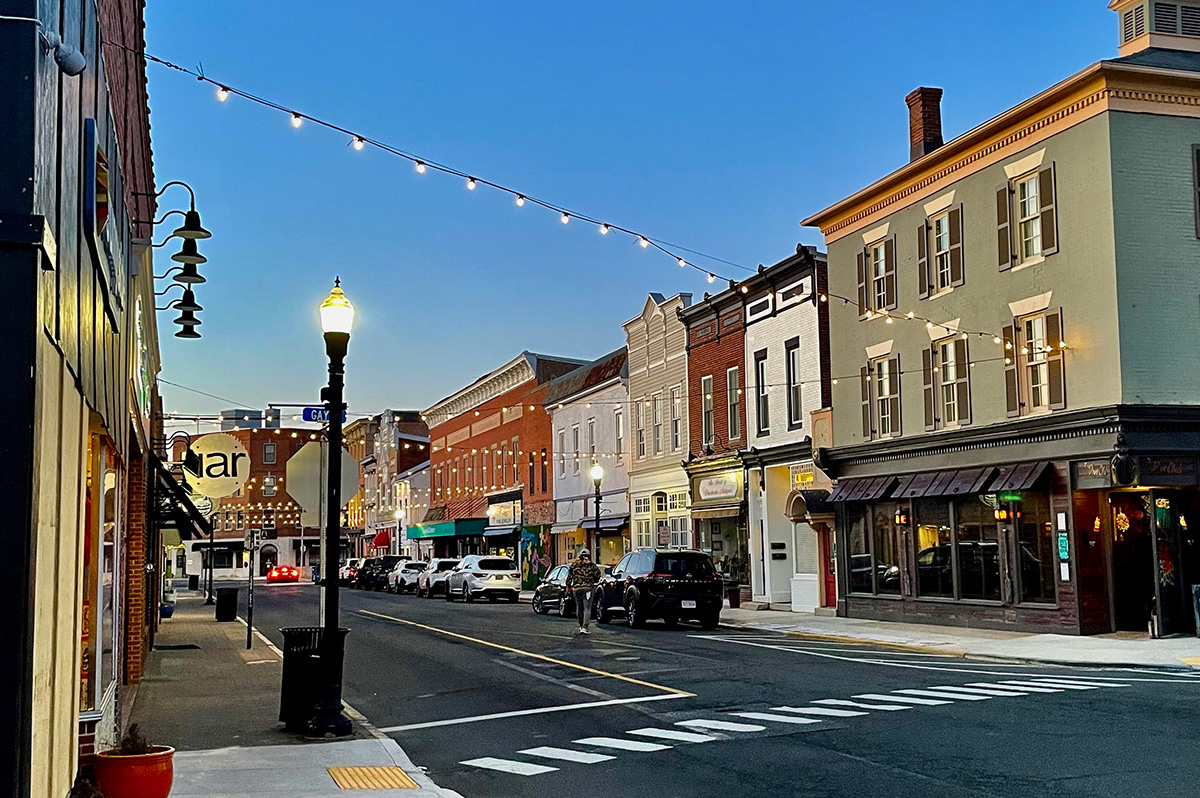
CAMBRIDGE, Md. — Driving through this scenic, historic town on Maryland’s Eastern Shore, you’ll be charmed by streets lined with unique shops, restaurants, and beautifully restored Victorian homes. You’ll also be struck by the number of LGBTQ Pride flags flying throughout the town.
The flags are a reassuring signal that everyone is welcome here, despite the town’s location in ruby red Dorchester County, which voted for Donald Trump over Kamala Harris by a lopsided margin. But don’t let that deter you from visiting. A new organization, Proudly Cambridge, is holding its debut Pride event this weekend, touting the town’s welcoming, inclusive culture.
“We stumbled on a beautiful secret and we wanted to help get the word out,” said James Lumalcuri of the effort to create Proudly Cambridge.
The organization celebrates diversity, enhances public spaces, and seeks to uplift all that Cambridge has to share, according to its mission statement, under the tagline “You Belong Here.”
The group has so far held informal movie nights and a picnic and garden party; the launch party is June 28 at the Cambridge Yacht Club, which will feature a Pride celebration and tea dance. The event’s 75 tickets sold out quickly and proceeds benefit DoCo Pride.
“Tickets went faster than we imagined and we’re bummed we can’t welcome everyone who wanted to come,” Lumalcuri said, adding that organizers plan to make “Cheers on the Choptank” an annual event with added capacity next year.
One of the group’s first projects was to distribute free Pride flags to anyone who requested one and the result is a visually striking display of a large number of flags flying all over town. Up next: Proudly Cambridge plans to roll out a program offering affirming businesses rainbow crab stickers to show their inclusiveness and LGBTQ support. The group also wants to engage with potential visitors and homebuyers.
“We want to spread the word outside of Cambridge — in D.C. and Baltimore — who don’t know about Cambridge,” Lumalcuri said. “We want them to come and know we are a safe haven. You can exist here and feel comfortable and supported by neighbors in a way that we didn’t anticipate when we moved here.”
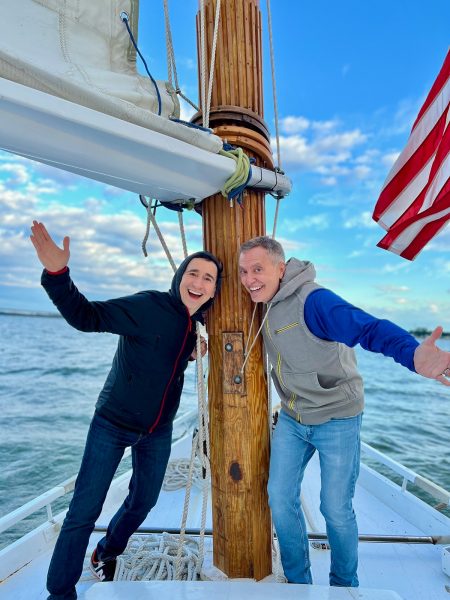
Lumalcuri, 53, a federal government employee, and his husband, Lou Cardenas, 62, a Realtor, purchased a Victorian house in Cambridge in 2021 and embarked on an extensive renovation. The couple also owns a home in Adams Morgan in D.C.
“We saw the opportunity here and wanted to share it with others,” Cardenas said. “There’s lots of housing inventory in the $300-400,000 range … we’re not here to gentrify people out of town because a lot of these homes are just empty and need to be fixed up and we’re happy to be a part of that.”
Lumalcuri was talking with friends one Sunday last year at the gazebo (affectionately known as the “gayzebo” by locals) at the Yacht Club and the idea for Proudly Cambridge was born. The founding board members are Lumalcuri, Corey van Vlymen, Brian Orjuela, Lauren Mross, and Caleb Holland. The group is currently working toward forming a 501(c)3.
“We need visibility and support for those who need it,” Mross said. “We started making lists of what we wanted to do and the five of us ran with it. We started meeting weekly and solidified what we wanted to do.”
Mross, 50, a brand strategist and web designer, moved to Cambridge from Atlanta with her wife three years ago. They knew they wanted to be near the water and farther north and began researching their options when they discovered Cambridge.
“I had not heard of Cambridge but the location seemed perfect,” she said. “I pointed on a map and said this is where we’re going to move.”
The couple packed up, bought a camper trailer and parked it in different campsites but kept coming back to Cambridge.
“I didn’t know how right it was until we moved here,” she said. “It’s the most welcoming place … there’s an energy vortex here – how did so many cool, progressive people end up in one place?”
Corey van Vlymen and his husband live in D.C. and were looking for a second home. They considered Lost River, W.Va., but decided they preferred to be on the water.
“We looked at a map on both sides of the bay and came to Cambridge on a Saturday and bought a house that day,” said van Vlymen, 39, a senior scientist at Booz Allen Hamilton. They’ve owned in Cambridge for two years.
They were drawn to Cambridge due to its location on the water, the affordable housing inventory, and its proximity to D.C.; it’s about an hour and 20 minutes away.
Now, through the work of Proudly Cambridge, they hope to highlight the town’s many attributes to residents and visitors alike.
“Something we all agree on is there’s a perception problem for Cambridge and a lack of awareness,” van Vlymen said. “If you tell someone you’re going to Cambridge, chances are they think, ‘England or Massachusetts?’”
He cited the affordability and the opportunity to save older, historic homes as a big draw for buyers.
“It’s all about celebrating all the things that make Cambridge great,” Mross added. “Our monthly social events are joyful and celebratory.” A recent game night drew about 70 people.
She noted that the goal is not to gentrify the town and push longtime residents out, but to uplift all the people who are already there while welcoming new visitors and future residents.
They also noted that Proudly Cambridge does not seek to supplant existing Pride-focused organizations. Dorchester County Pride organizes countywide Pride events and Delmarva Pride was held in nearby Easton two weeks ago.
“We celebrate all diversity but are gay powered and gay led,” Mross noted.
To learn more about Proudly Cambridge, visit the group on Facebook and Instagram.
What to see and do
Cambridge, located 13 miles up the Choptank River from the Chesapeake Bay, has a population of roughly 15,000. It was settled in 1684 and named for the English university town in 1686. It is home to the Harriet Tubman Museum, mural, and monument. Its proximity to the Blackwater National Wildlife Refuge makes it a popular stop for birders, drawn to more than 27,000 acres of marshland dubbed “the Everglades of the north.”
The refuge is walkable, bikeable, and driveable, making it an accessible attraction for all. There are kayaking and biking tours through Blackwater Adventures (blackwateradventuresmd.com).
Back in town, take a stroll along the water and through historic downtown and admire the architecture. Take in the striking Harriet Tubman mural (424 Race St.). Shop in the many local boutiques, and don’t miss the gay-owned Shorelife Home and Gifts (421 Race St.), filled with stylish coastal décor items.
Stop for breakfast or lunch at Black Water Bakery (429 Race St.), which offers a full compliment of coffee drinks along with a build-your-own mimosa bar and a full menu of creative cocktails.
The Cambridge Yacht Club (1 Mill St.) is always bustling but you need to be a member to get in. Snapper’s on the water is temporarily closed for renovations. RaR Brewing (rarbrewing.com) is popular for craft beers served in an 80-year-old former pool hall and bowling alley. The menu offers burgers, wings, and other bar fare.
For dinner or wine, don’t miss the fantastic Vintage 414 (414 Race St.), which offers lunch, dinner, wine tasting events, specialty foods, and a large selection of wines. The homemade cheddar crackers, inventive flatbreads, and creative desserts (citrus olive oil cake, carrot cake trifle) were a hit on a recent visit.
Also nearby is Ava’s (305 High St.), a regional chain offering outstanding Italian dishes, pizzas, and more.
For something off the beaten path, visit Emily’s Produce (22143 Church Creek Rd.) for its nursery, produce, and prepared meals.
“Ten minutes into the sticks there’s a place called Emily’s Produce, where you can pay $5 and walk through a field and pick sunflowers, blueberries, you can feed the goats … and they have great food,” van Vlymen said.
As for accommodations, there’s the Hyatt Regency Chesapeake Bay (100 Heron Blvd. at Route 50), a resort complex with golf course, spa, and marina. Otherwise, check out Airbnb and VRBO for short-term rentals closer to downtown.
Its proximity to D.C. and Baltimore makes Cambridge an ideal weekend getaway. The large LGBTQ population is welcoming and they are happy to talk up their town and show you around.
“There’s a closeness among the neighbors that I wasn’t feeling in D.C.,” Lumalcuri said. “We look after each other.”
a&e features
James Baldwin bio shows how much of his life is revealed in his work
‘A Love Story’ is first major book on acclaimed author’s life in 30 years
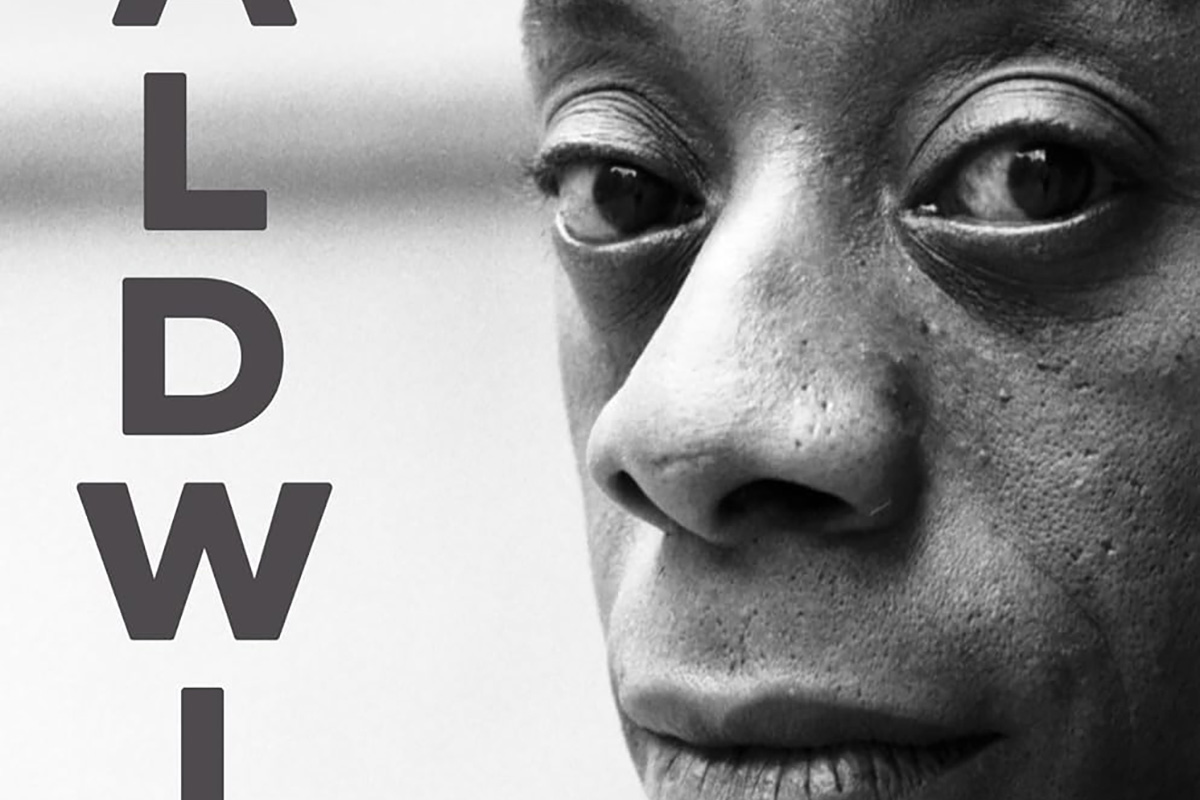
‘Baldwin: A Love Story’
By Nicholas Boggs
c.2025, FSG
$35/704 pages
“Baldwin: A Love Story” is a sympathetic biography, the first major one in 30 years, of acclaimed Black gay writer James Baldwin. Drawing on Baldwin’s fiction, essays, and letters, Nicolas Boggs, a white writer who rediscovered and co-edited a new edition of a long-lost Baldwin book, explores Baldwin’s life and work through focusing on his lovers, mentors, and inspirations.
The book begins with a quick look at Baldwin’s childhood in Harlem, and his difficult relationship with his religious, angry stepfather. Baldwin’s experience with Orilla Miller, a white teacher who encouraged the boy’s writing and took him to plays and movies, even against his father’s wishes, helped shape his life and tempered his feelings toward white people. When Baldwin later joined a church and became a child preacher, though, he felt conflicted between academic success and religious demands, even denouncing Miller at one point. In a fascinating late essay, Baldwin also described his teenage sexual relationship with a mobster, who showed him off in public.
Baldwin’s romantic life was complicated, as he preferred men who were not outwardly gay. Indeed, many would marry women and have children while also involved with Baldwin. Still, they would often remain friends and enabled Baldwin’s work. Lucien Happersberger, who met Baldwin while both were living in Paris, sent him to a Swiss village, where he wrote his first novel, “Go Tell It on the Mountain,” as well as an essay, “Stranger in the Village,” about the oddness of being the first Black person many villagers had ever seen. Baldwin met Turkish actor Engin Cezzar in New York at the Actors’ Studio; Baldwin later spent time in Istanbul with Cezzar and his wife, finishing “Another Country” and directing a controversial play about Turkish prisoners that depicted sexuality and gender.
Baldwin collaborated with French artist Yoran Cazac on a children’s book, which later vanished. Boggs writes of his excitement about coming across this book while a student at Yale and how he later interviewed Cazac and his wife while also republishing the book. Baldwin also had many tumultuous sexual relationships with young men whom he tried to mentor and shape, most of which led to drama and despair.
The book carefully examines Baldwin’s development as a writer. “Go Tell It on the Mountain” draws heavily on his early life, giving subtle signs of the main character John’s sexuality, while “Giovanni’s Room” bravely and openly shows a homosexual relationship, highly controversial at the time. “If Beale Street Could Talk” features a woman as its main character and narrator, the first time Baldwin wrote fully through a woman’s perspective. His essays feel deeply personal, even if they do not reveal everything; Lucian is the unnamed visiting friend in one who the police briefly detained along with Baldwin. He found New York too distracting to write, spending his time there with friends and family or on business. He was close friends with modernist painter Beauford Delaney, also gay, who helped Baldwin see that a Black man could thrive as an artist. Delaney would later move to France, staying near Baldwin’s home.
An epilogue has Boggs writing about encountering Baldwin’s work as one of the few white students in a majority-Black school. It helpfully reminds us that Baldwin connects to all who feel different, no matter their race, sexuality, gender, or class. A well-written, easy-flowing biography, with many excerpts from Baldwin’s writing, it shows how much of his life is revealed in his work. Let’s hope it encourages reading the work, either again or for the first time.
a&e features
Looking back at 50 years of Pride in D.C
Washington Blade’s unique archives chronicle highs, lows of our movement
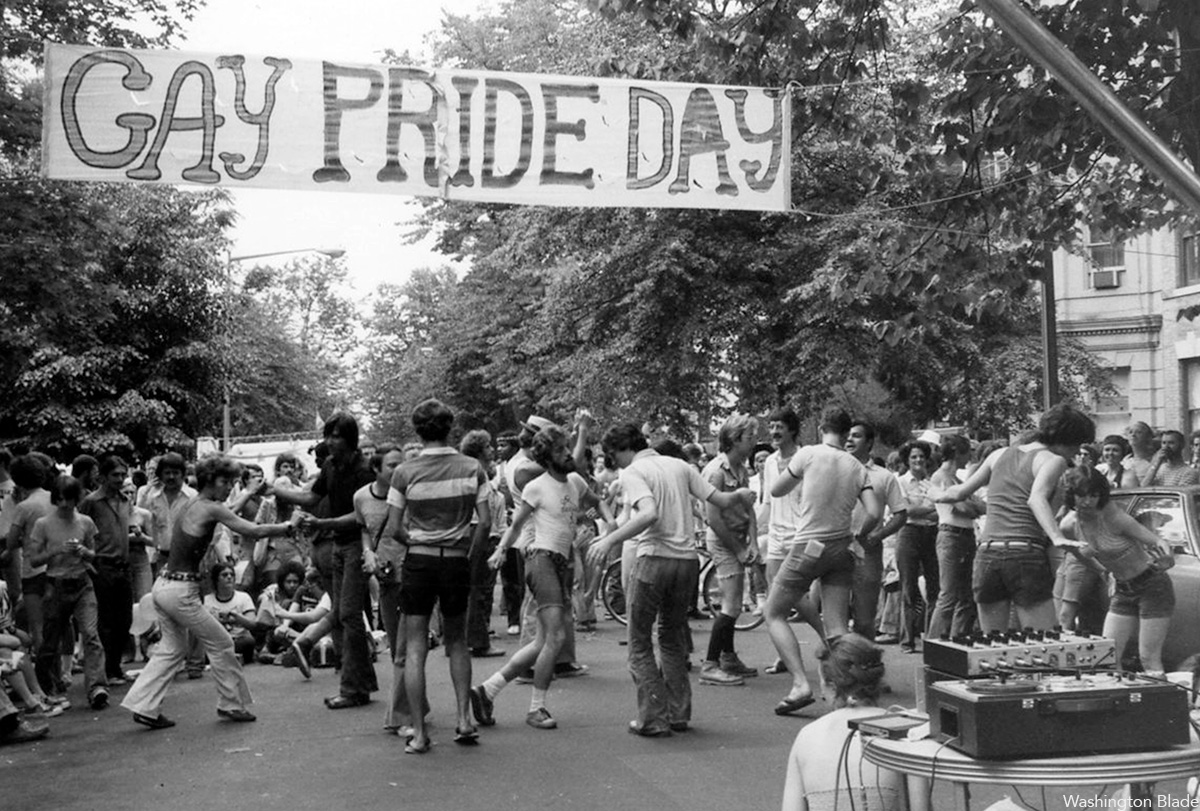
To celebrate the 50th anniversary of LGBTQ Pride in Washington, D.C., the Washington Blade team combed our archives and put together a glossy magazine showcasing five decades of celebrations in the city. Below is a sampling of images from the magazine but be sure to find a print copy starting this week.

The magazine is being distributed now and is complimentary. You can find copies at LGBTQ bars and restaurants across the city. Or visit the Blade booth at the Pride festival on June 7 and 8 where we will distribute copies.
Thank you to our advertisers and sponsors, whose support has enabled us to distribute the magazine free of charge. And thanks to our dedicated team at the Blade, especially Photo Editor Michael Key, who spent many hours searching the archives for the best images, many of which are unique to the Blade and cannot be found elsewhere. And thanks to our dynamic production team of Meaghan Juba, who designed the magazine, and Phil Rockstroh who managed the process. Stephen Rutgers and Brian Pitts handled sales and marketing and staff writers Lou Chibbaro Jr., Christopher Kane, Michael K. Lavers, Joe Reberkenny along with freelancer and former Blade staffer Joey DiGuglielmo wrote the essays.
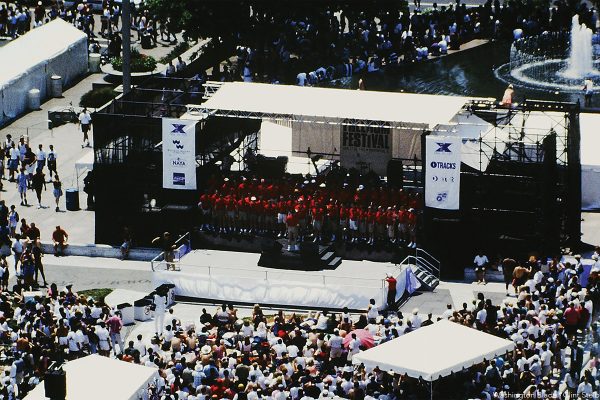
The magazine represents more than 50 years of hard work by countless reporters, editors, advertising sales reps, photographers, and other media professionals who have brought you the Washington Blade since 1969.
We hope you enjoy the magazine and keep it as a reminder of all the many ups and downs our local LGBTQ community has experienced over the past 50 years.
I hope you will consider supporting our vital mission by becoming a Blade member today. At a time when reliable, accurate LGBTQ news is more essential than ever, your contribution helps make it possible. With a monthly gift starting at just $7, you’ll ensure that the Blade remains a trusted, free resource for the community — now and for years to come. Click here to help fund LGBTQ journalism.
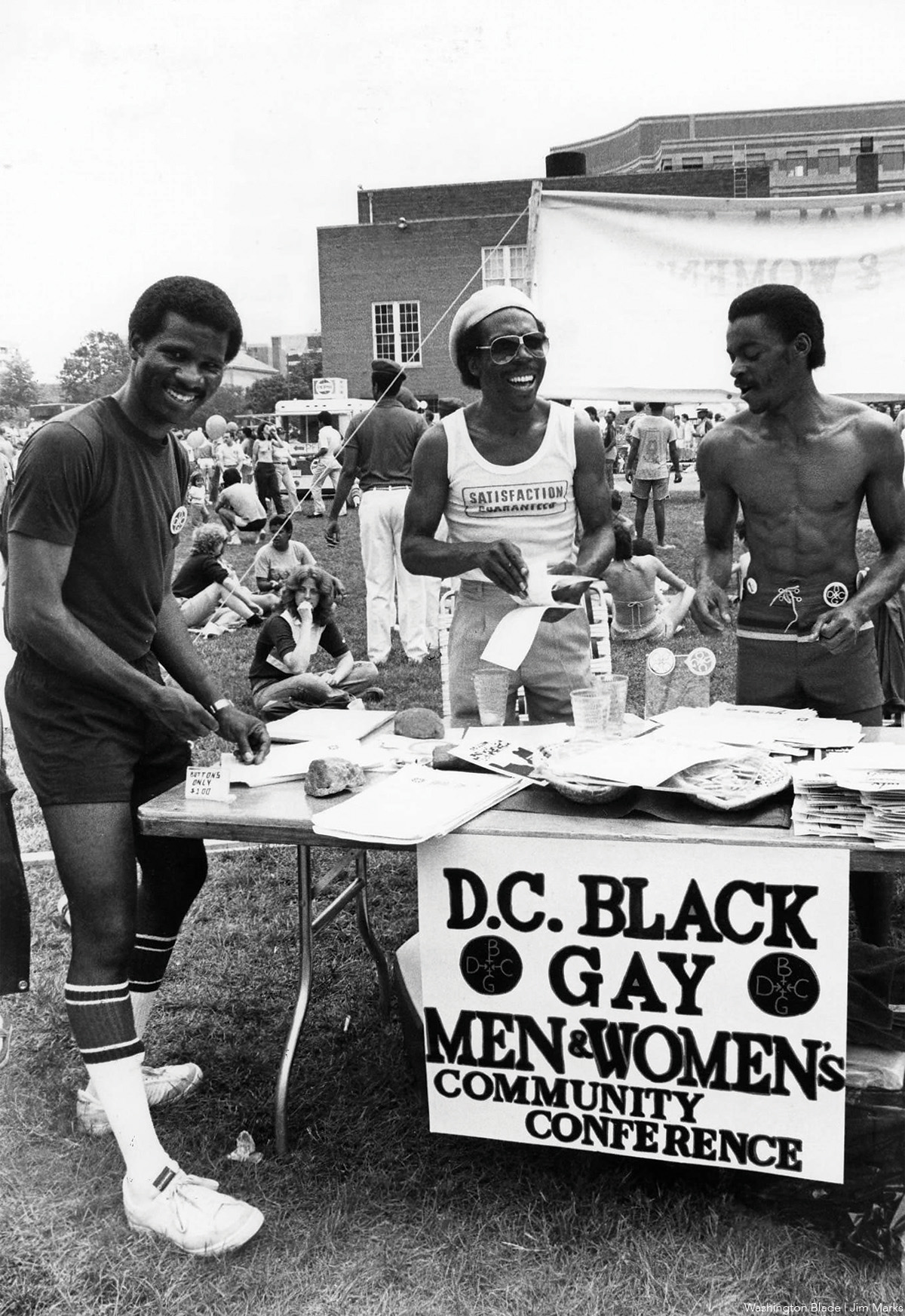

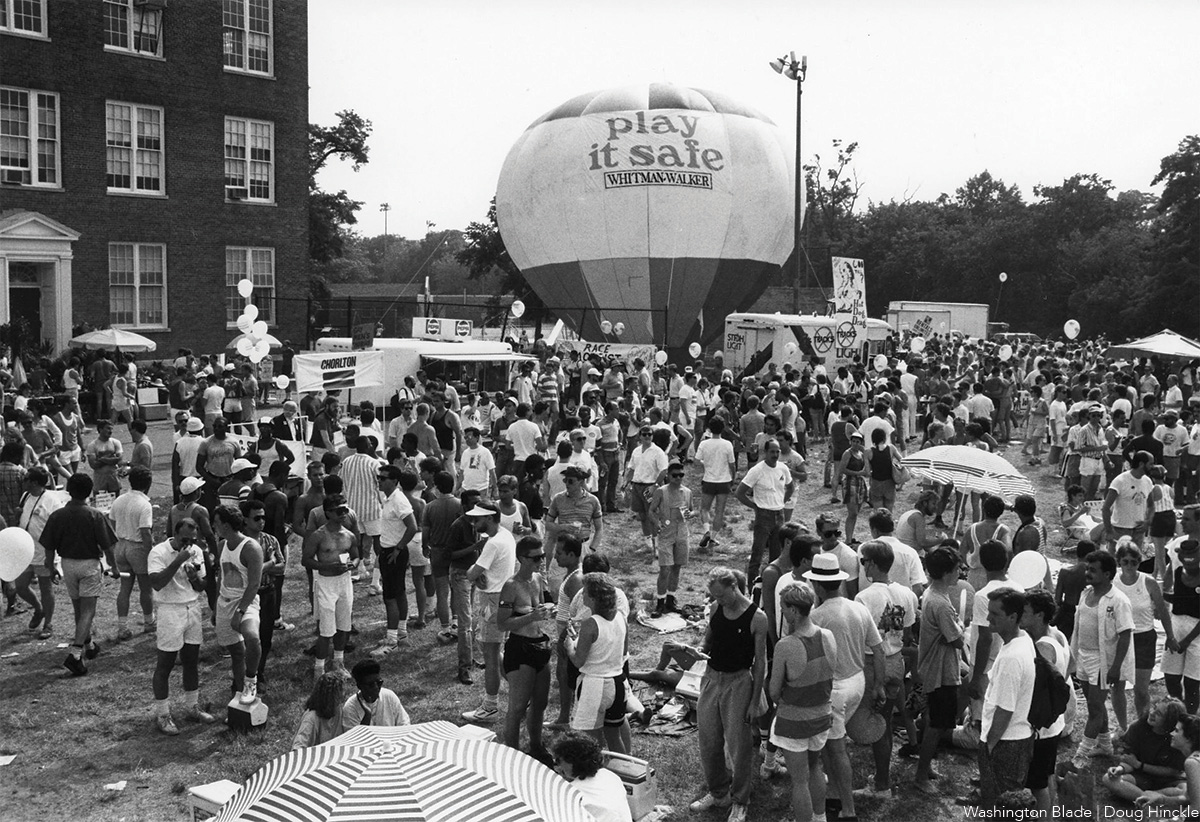
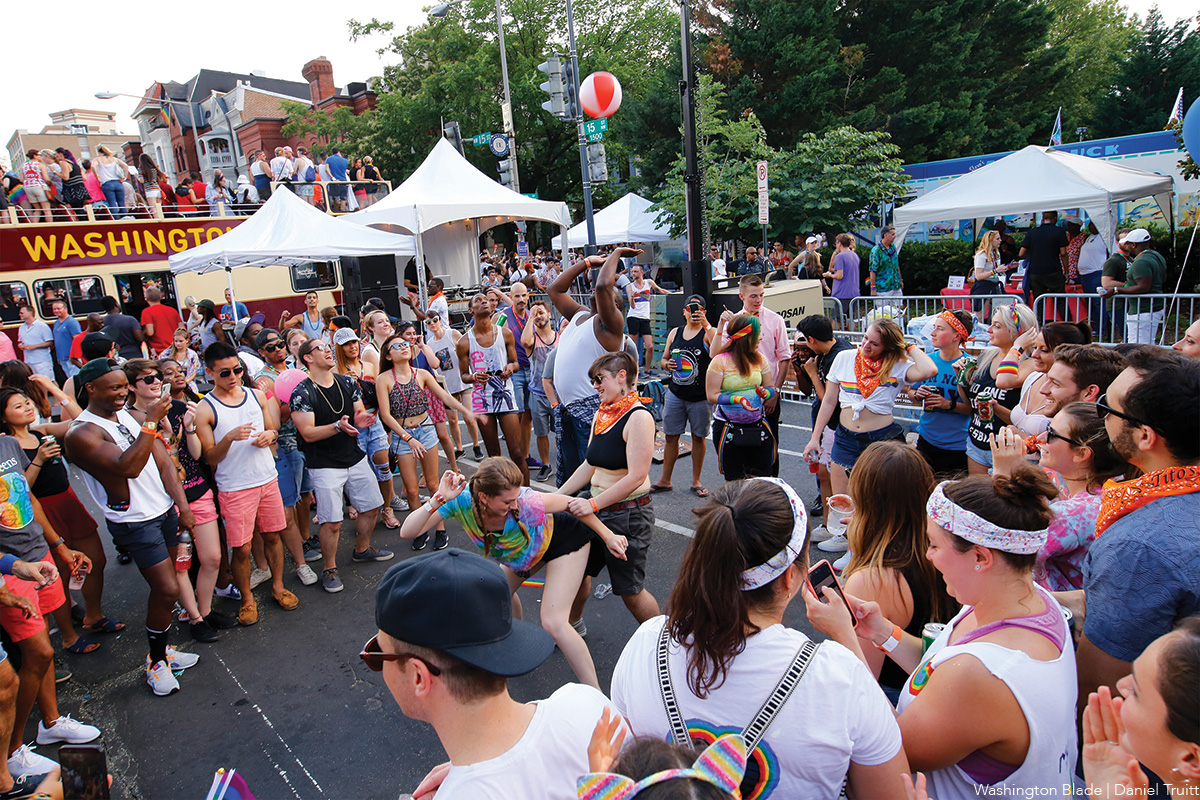
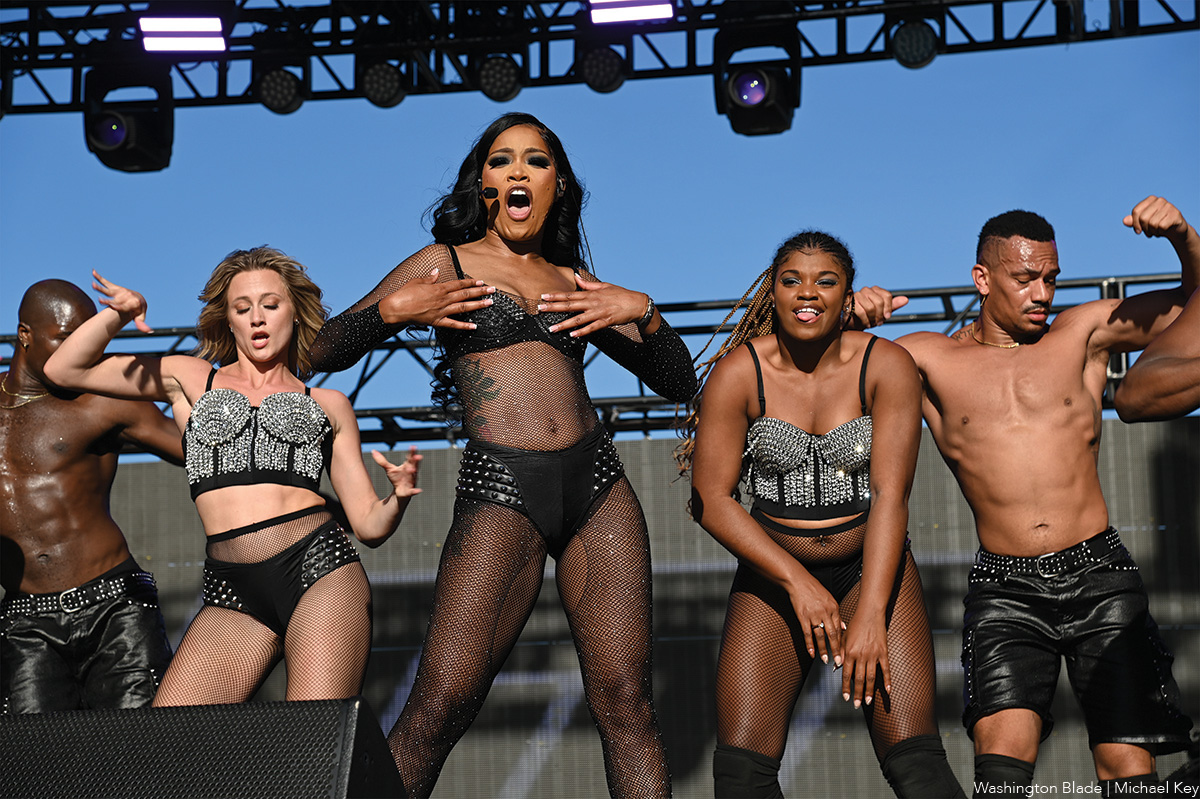
-

 U.S. Supreme Court3 days ago
U.S. Supreme Court3 days agoSupreme Court upholds ACA rule that makes PrEP, other preventative care free
-

 U.S. Supreme Court3 days ago
U.S. Supreme Court3 days agoSupreme Court rules parents must have option to opt children out of LGBTQ-specific lessons
-

 India5 days ago
India5 days agoIndian court rules a transgender woman is a woman
-

 National4 days ago
National4 days agoEvan Wolfson on the 10-year legacy of marriage equality

